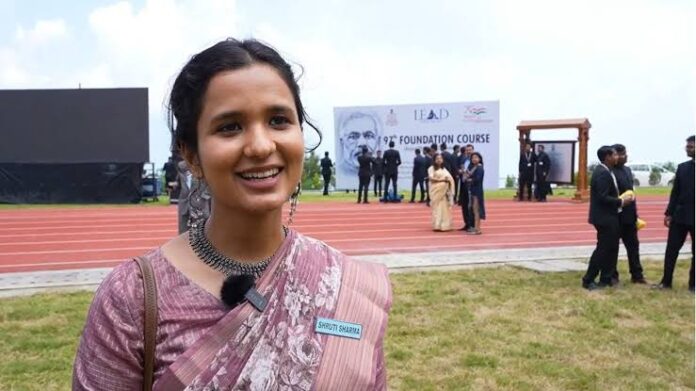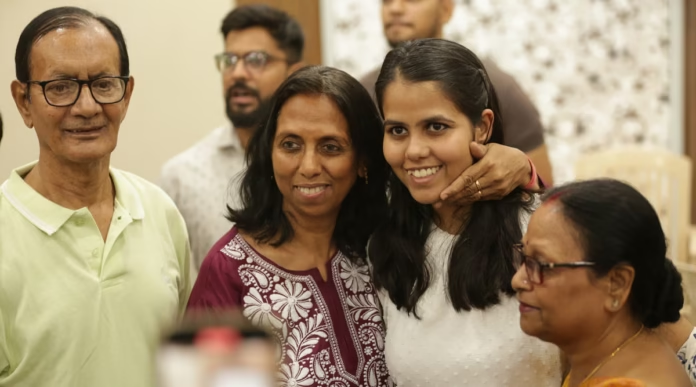A Story of Resilience, Dreams, and Determination
In the ever-challenging landscape of the UPSC Civil Services Examination, each topper’s journey is a saga of discipline, dreams, and determination. But some stories touch a deeper chord. One such story is that of Shubham Kumar, who secured All India Rank 1 in UPSC CSE 2020.
Hailing from a humble village in Bihar, Shubham’s ascent to the top of India’s most competitive exam is not just a personal achievement—it’s a symbol of possibility for lakhs of aspirants from small towns across India.
Early Life and Educational Roots in Bihar
Shubham Kumar was born on 14 February 1997 in Kumhari village, located in Kadwa block of Katihar district, Bihar. Coming from an ordinary background, he grew up amidst modest means and strong values.
- His father, Devanand Singh, served as a Branch Manager at Uttar Bihar Gramin Bank.
- His mother, Punam Devi, is a homemaker.
- His elder sister, a civil engineer, has been a key influence and source of motivation.
Shubham’s early education was at Vidya Vihar Residential School, Purnia, where he completed his 10th grade. Later, he pursued 12th standard from Chinmaya Vidyalaya, Bokaro (Jharkhand), known for academic rigor and discipline.
In 2014, he cracked the IIT entrance exam, securing admission to the Indian Institute of Technology (IIT) Bombay, where he completed B.Tech in Civil Engineering.
From IIT Bombay to UPSC: The Turning Point
While studying at IIT Bombay, Shubham actively participated in cultural and leadership activities. He was elected as the General Secretary (Social and Cultural) of his hostel and played a vital role in securing the hostel’s first-ever Cultural Cup.
His time at Purdue University, USA, during a summer research internship opened his eyes to the contrasts between rural India and developed societies. It was here that he realized he wanted to do something more impactful than a corporate career—something that could contribute directly to nation-building.
That realization sowed the seeds of a new goal: becoming an IAS officer.
The UPSC Journey: From Failures to Rank 1
Shubham’s UPSC path wasn’t without obstacles:
- 2018 (1st Attempt): Did not clear Prelims.
- 2019 (2nd Attempt): Secured AIR 290 and was allocated to the Indian Defence Accounts Service (IDAS).
- 2020 (3rd Attempt): While undergoing training at the National Academy of Defence Financial Management, he appeared for his third attempt and topped the exam.
His perseverance and constant self-improvement mindset turned failures into stepping stones.
Preparation Strategy: How Shubham Kumar Cracked UPSC
Subject Strategy
- Optional Subject: Anthropology
- Chosen for its concise syllabus, scoring nature, and overlap with GS-I and Ethics.
- He focused on standard sources: Vaid Sir notes, Tribal India by Nadeem Hasnain, and IGNOU PDFs.
- Practiced diagrams, case studies, and flowcharts to enrich answers.
Daily Study Schedule
During Mains prep:
| Time | Activity |
|---|---|
| 6:00 AM | Wake up, freshen up, breakfast |
| 7:00 AM – 10:00 AM | Study (GS + Optional) |
| 10:00 – 10:30 AM | Break |
| 10:30 – 1:00 PM | Answer Writing + Revision |
| 1:00 – 2:00 PM | Lunch + Rest |
| 2:00 – 5:00 PM | Study (Current Affairs + Essay) |
| 5:00 – 7:00 PM | Mock Tests + GS IV practice |
| 7:00 – 9:00 PM | Light Reading, Newspaper, Dinner |
“I never studied more than 8–10 hours, but I made each hour count.”
Importance of Mental Preparation
Shubham credits a large part of his success to his emotional stability. Facing multiple failures could have broken his confidence, but instead, he:
- Practiced mindfulness and breathing exercises.
- Took regular digital detox breaks.
- Spoke daily to his parents and sister for emotional grounding.
- Listened to motivational speeches and IAS topper interviews to stay inspired.
“You need to train not just your mind, but your mindset.”
UPSC CSE 2020 Final Marks
| Paper | Marks |
|---|---|
| Essay | 134 |
| General Studies I | 115 |
| General Studies II | 111 |
| General Studies III | 92 |
| General Studies IV | 106 |
| Optional Paper I (Anthropology) | 170 |
| Optional Paper II (Anthropology) | 150 |
| Written Total | 878 |
| Interview (Personality Test) | 176 |
| Final Total | 1054 |
Mock Interview & DAF-Based Questions
His mock interviews prepared him for a range of questions such as:
- Why civil services after IIT and Purdue?
- What do you think about Bihar’s underdevelopment?
- Views on caste-based census
- How would you solve rural unemployment?
He responded with practical solutions, constitutional insights, and ground realities — impressing the final UPSC panel.
Family’s Role and Influence
Shubham constantly credits his family:
- Father – A government servant who taught him the importance of public responsibility.
- Mother – Ensured he was emotionally stable and focused.
- Sister – Helped him with Anthropology and strategy discussions.
Despite limited exposure and fewer resources compared to big-city aspirants, the support system at home was rock solid.
Vision as an IAS Officer
Shubham wants to bring lasting transformation in:
- Rural infrastructure and education
- Job creation in Tier-3 and Tier-4 towns
- Transparent local governance
- Digital inclusion of Panchayats
He expressed a strong preference for the Bihar cadre, stating:
“I want to serve where I come from. Bihar is full of potential waiting to be unlocked.”
Tips for UPSC Aspirants from Shubham Kumar
- Don’t be afraid to fail – Your learnings are your ladder.
- Stick to limited resources – Depth beats breadth.
- Practice answer writing early – It’s the game-changer.
- Have faith in your story – You don’t need to mimic others.
- Stay healthy – mentally and physically – A calm mind writes better answers.
Final Words
Shubham Kumar IAS isn’t just a UPSC topper. He’s the face of aspirational India—proof that you don’t need metro cities, elite backgrounds, or English-speaking upbringings to serve the nation.
All you need is a clear vision, strong values, and relentless effort.
“When dreams are rooted in reality and watered with hard work, even the smallest seed can become the tallest tree.”
And Shubham, the boy from Kumhari village, has indeed grown into a tree that will give shade to many.





